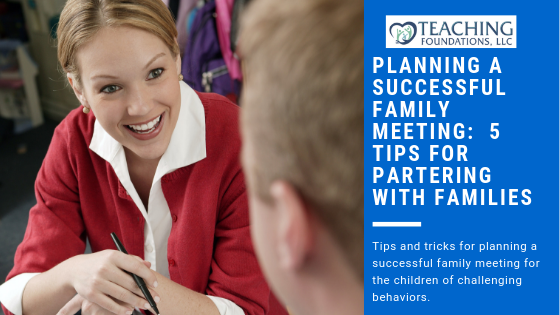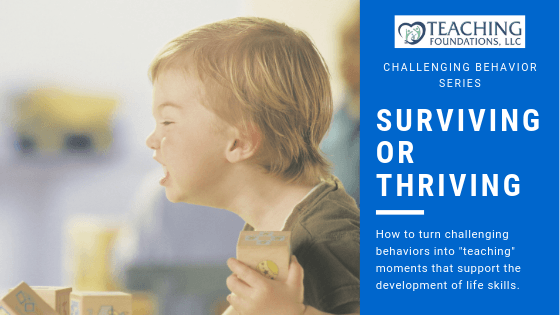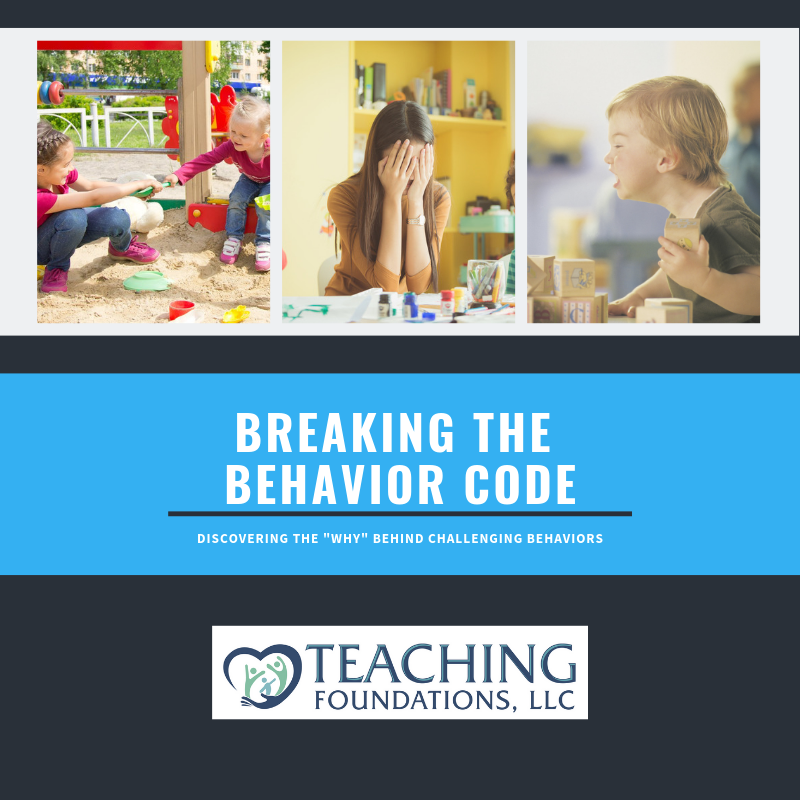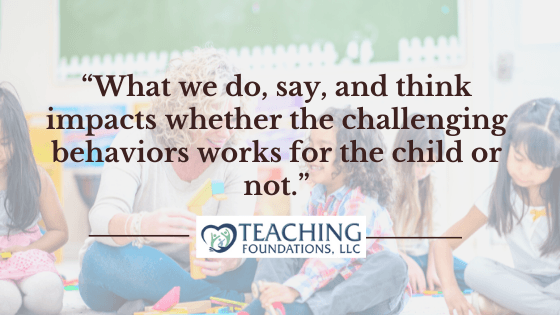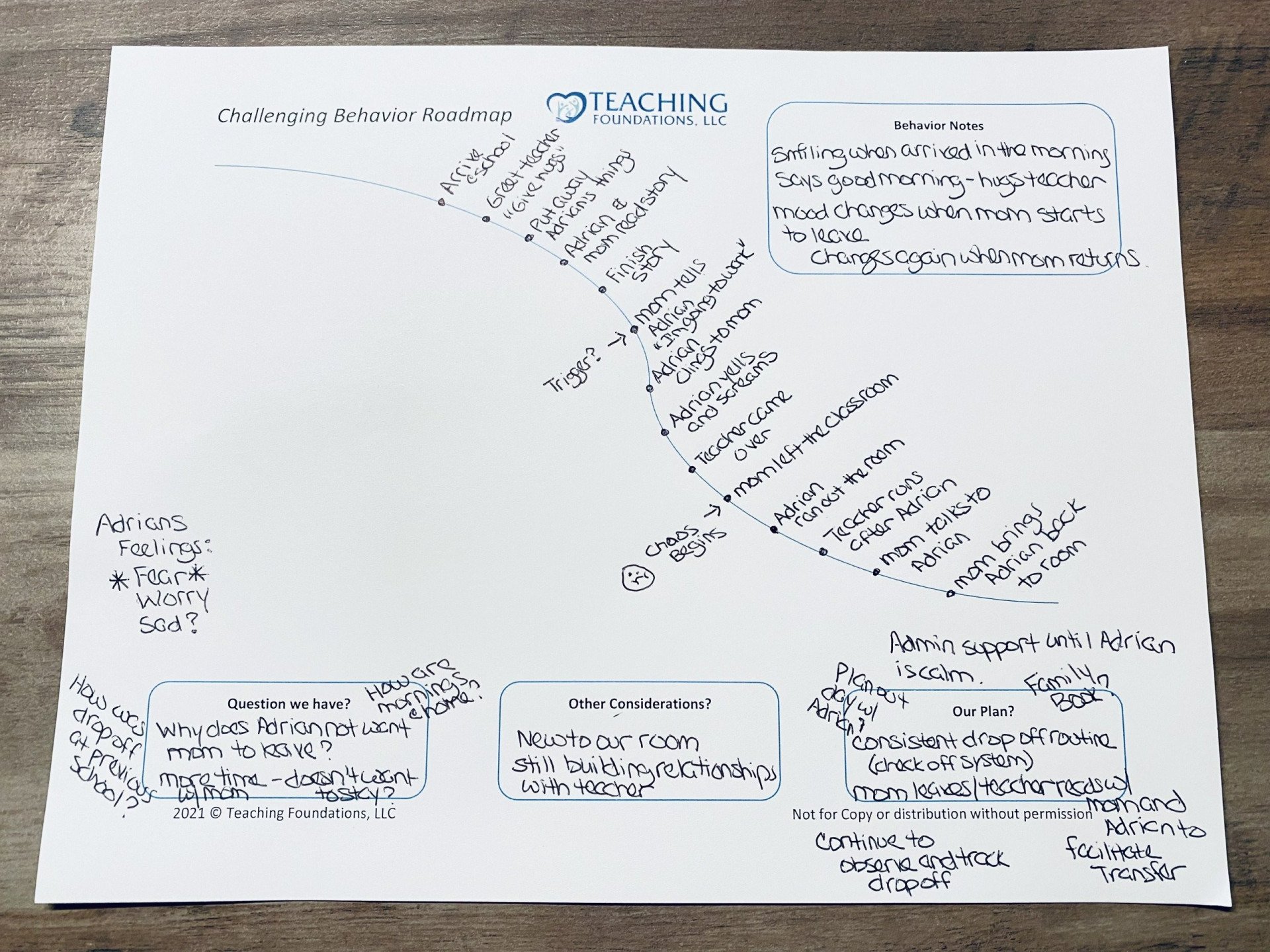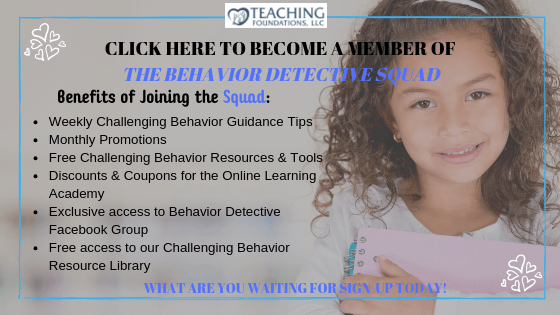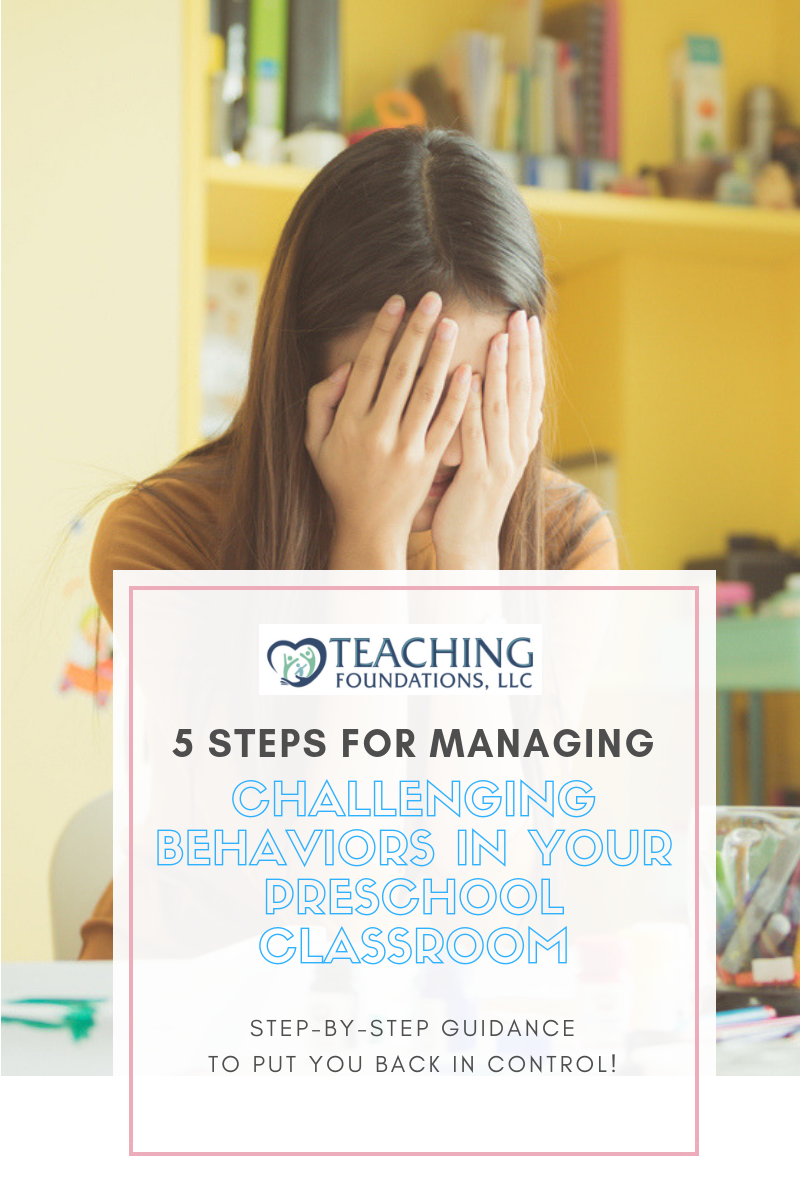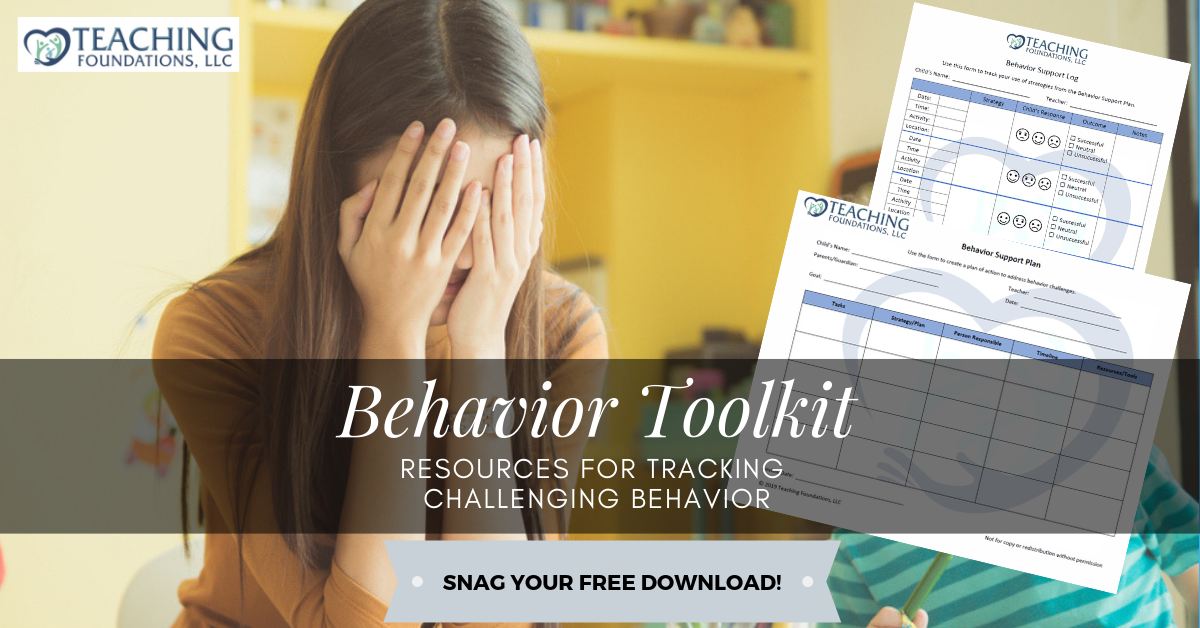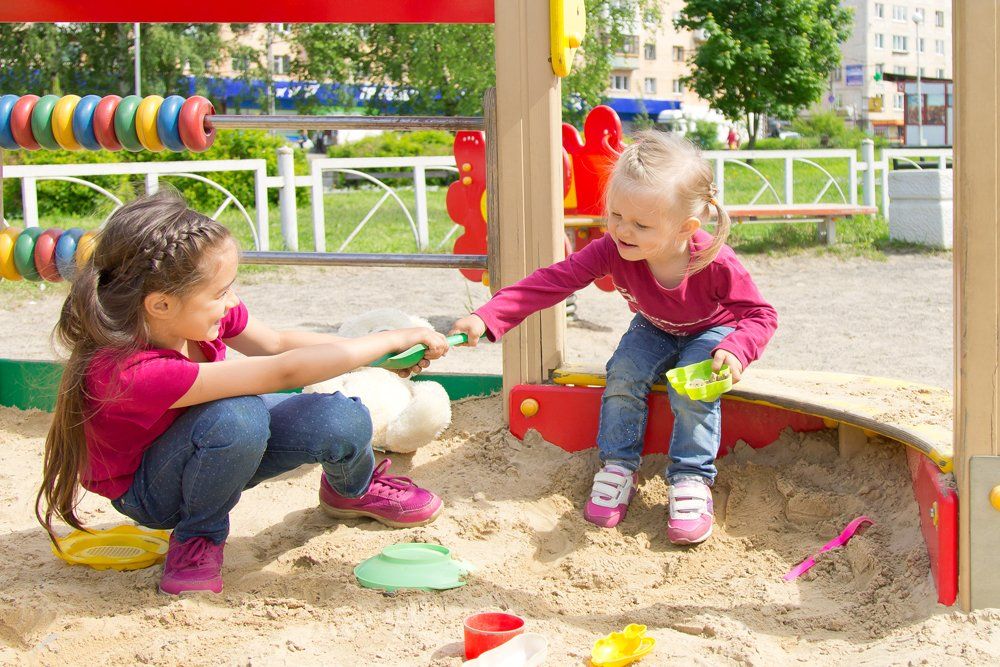Are you actually encouraging the challenging behaviors you are struggling to prevent?
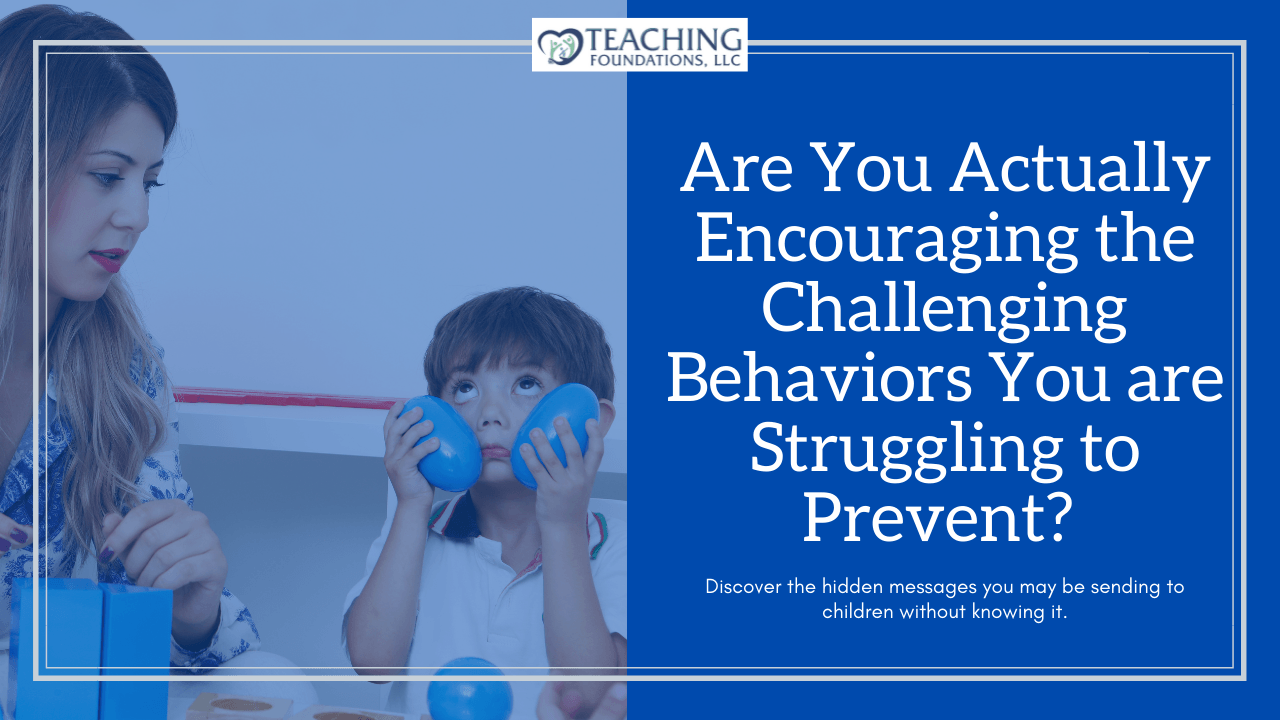
Have you ever had a child who despite everything you did, their behavior only continued to get worse?
You’ve probably heard stories similar to this:
“Drop off was a time of day I dreaded. Adrian would arrive in the morning with his mom and they would read a book together. When mom went to leave, Adrian would storm the door and run out of the classroom. We would have to chase him down the hall. If his mom saw him, she would come back to the classroom to talk to Adrian. At first, we thought the challenging drop off would go away once he got used to being in our classroom. However, it only increased over time with him starting to yell, cry, and throw things when his mom left for work. This became a part of our morning routine to the point of administrators needing to come to our classroom to assist. Each morning would melt down into chaos that disrupted our morning routines. It was a nightmare to say the least.“
I shared this example with you because this is a time when many of us question our abilities as a teacher. I’ve had many similar moments in my teaching career. These moments taught me a lot about working with children with challenging behaviors. They also helped me think about my role in helping the children in my classroom. Looking back, one of the reasons I struggled so much was I didn’t take the time to reflect on the big picture about the challenging behaviors and my role in it. Now, reflection has become a big part of how I plan my response to challenging behaviors. It is also a major factor in my ability to maintain composure and perspective.
In this article, I’m showing you how I reflect on the big picture of children's challenging behaviors and adjust my interactions to actually see progress when working with the children with challenging behaviors in my classroom.
Why is the child behaving this way?
The first thing I stop and consider is, “What is the purpose of this behavior?” In other words, “Why was he doing this?”
There are two “whys” I was always consider:
(1) The "in-the-moment" why: what has caused this specific incident of challenging behavior
(2) The "big picture" why – the missing skills or life circumstances driving the behavior.
Knowing the "in-the-moment" why helps me to connect with the child when responding to their behavior, while the "big picture" why helps me know what skills to teach. Check out this article to learn how I track behavior to discover the reasons behind children’s challenging behaviors.
One thing I have learned is that children will continue to do challenging behaviors as long as it works for them. Our challenge is to figure out what the child is getting out of the behavior and teach them new ways to get what they want. It does take time. However, children will try new behaviors when they see that the new behavior works for them with better results.
In my experience with a child similar to Adrian from the example above, I learned that the "in-the-moment" why was delaying mom leaving for work. I learned the "big picture" why through a meeting with mom. Adrian had recently lost his father. His father went to work and never returned home because he was in a car accident. This child had a real fear that his mom wouldn’t return if she left. I used this knowledge to connect with him during drop-off by saying “you don’t want mom to leave”. We also had a conversation with mom about leaving and allowing us to address the running out of the classroom. We also introduced goodbye routines, such as watching mom leave so he didn’t need to run out of the room. We used our knowledge of his "big picture" why to talk with him about his fear and reassure him that mom would return. Last, we planned ways for him to stay in contact with mom throughout the day with calls to check-in, adding when mom comes to pick up to daily schedule, letters and drawings sent home, as well as, notes from mom in the afternoon.
It is important for teachers to be aware of the reasons for children's behaviors because this will provide us with the information we need to meet each child’s individual needs.
Teacher's Role in Challenging Behaviors
It is important for teachers to be aware of the reasons for children's behaviors because this will provide us with guidance on how to respond to the behavior. Positive reinforce is a term we hear a lot when discussing behavior guidance. Positive reinforcement is when I’m doing something to increase the chances of a behavior happening again. Positive reinforcement works best when what you are doing or giving is of value to the child (praise, high fives, stickers, etc.).
Did you know there is another way to reinforce behavior? It is by removing things or situations that a child does not want. In Adrian’s example every time Adrian ran out of the room and mom returned to talk with him, it increased the chances of Adrian running the next day. This is one of the big reasons why the behavior continued to increase despite our best efforts and plans. The response to Adrian’s behavior told him, “If you want mom to stay, run away.”
The behavior only began to decrease when our response did not include Adrian getting what he wanted, mom staying, by running away. In fact, the challenging behavior really reduced when Adrian was able to call and check-in with his mom and share with her what was happening at school. These strategies worked because they reduced Adrian's fear of mom not returning.
It’s important for us to remember that challenging behavior is more than what the child is doing. It’s also what we (and the family) do in response to the behavior. What we do, say, and think impacts whether the behavior works for the child or not. When we take the time to reflect on our interactions, we can identify how the child responds to our strategies and make adjustments, when needed. It’s a lot easier to change what we do. When working with children with challenging behaviors, this is as important as working to change the a child's behavior.
Introducing the Challenging Behavior Roadmap
One way I reflect on my role in children's challenging behaviors is with the Challenging Behavior Roadmap. After an incident of challenging behavior, I will sit down alone, or with the team of teachers I am working with, and map out the behavior incident. During the meeting, I list what happened first, second, next, and after that during the episode of challenging behavior. If your program has cameras, you can review the episode on the camera and complete the roadmap while you are viewing the footage. The benefits of doing the roadmap, include:
- It's an objective record of the sequence of events. It helps me not react emotionally to what happened but "see" the complete picture from beginning to end.
- Identify what the escalation point was during the timeline of events. When exactly did chaos breakout in the classroom?
- Identify how the child responded to my interactions and strategies
- Create a plan of action for the future.
Roadmaps are not meant to be shared with families. However, you can note questions to ask the parents or reflections on why the behavior is occurring to start conversations with the families about the challenging behavior. It can also provide you with specific details to share with the family and also how the child responded to the strategies you used. I find with the roadmap I notice things I didn't "see" while in the action and it helps be understand what happened in a more meaningful way.
Download our Challenging Behavior Roadmap to start mapping out the behavior episode in your classroom. What things do you notice about your interactions with the child with challenging behaviors? How does the child respond? Share your insights in the comments below.
If you are on Facebook, you can join our Behavior Detective Squad to share your roadmaps and any insights you've gained. You can also ask squad members for ideas to help you begin to teach the behaviors you want to see based on your roadmap insights. Our group is filled with early childhood educators working to Conquer Challenging Behaviors together.
Do you have a process for addressing challenging behaviors in your early childhood program? Our live, instructor-led virtual training, Breaking the Behavior Code: Discovering the "Why" Behind Challenging Behaviors will teach you our 5-step process. Sessions running in September and October.

